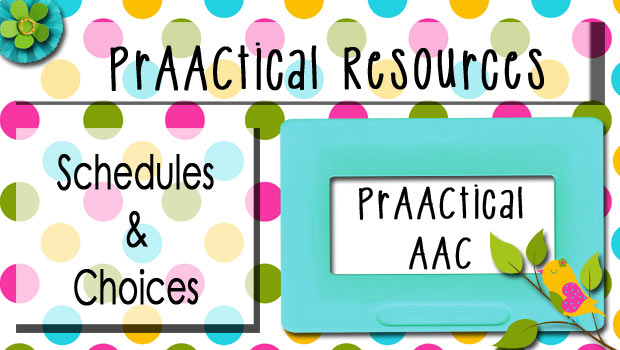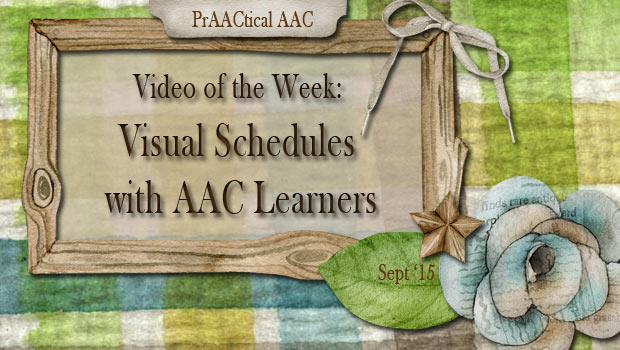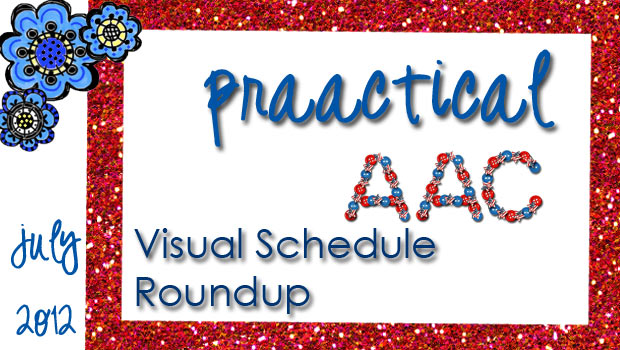Schedules and Choices

–
If you follow our blog, you know that last month we had lots to say on making, teaching, and using Visual Schedules/schedules%20license%20plate.jpg) . We ran out of time before we could discuss a question that comes up a lot in our own clinical practice. What role does choice-making play in visual schedules? Here are some of the things we think about when we consider this for the schedules we make and use.
. We ran out of time before we could discuss a question that comes up a lot in our own clinical practice. What role does choice-making play in visual schedules? Here are some of the things we think about when we consider this for the schedules we make and use.
We all like to have some say in what we do. Giving the learner an opportunity to make choices in a schedule makes sense when personal autonomy is a priority. Allowing the learner to choose which activities to place on the schedule supports personal autonomy: Having control over what happens in our lives is a big part of happiness for most people.
–
Here’s how we might do that with a visual schedule for a therapy session.
1.Select a consistent activity to begin and end the session, and anchor the schedule with the symbols for those activities. Those are fixed and not open to negotiation in order to give a sense of predictability and stability to the sessions. For a child, we might start with a ‘hello’ song and end with a ‘goodbye’ song. For an adult, we might start by reviewing the homework from last time and end by explaining the homework for the upcoming week.
—
2. Determine how many activities you have time for in a session and build the schedule with the appropriate number of slots. Try to create the schedule in such a way so that the areas where the learner can make a choice look visually distinct from the ones that are pre-set. That cues the learner that the rules are different and helps reduce any anxiety or conflict around when the learner has control and when the therapist makes the decision. The clearer the expectations are, the more effective the strategy will be.
–
3. Select symbols for activities that achieve your objectives for the session. Don’t include activities unless you’re prepared to actually do that activity. If you don’t have time for an art activity, leave it out of the options. Spent a lot of time in interactive reading last session? Leave that out of the mix for this session. The rule of thumb is that whatever choices you offer to the learner should be ones that are focused on the AAC therapy goals and activities for which all the materials are prepared and assembled. We’re offering only choices that work for us from a therapeutic standpoint.
–
4.When the learner enters the therapy space, begin building the schedule together. We like to offer more options than there are slots for and give the learner a true choice of what he/she does and does not want to do that session. Have the learner put the desired activity symbols on the schedule, choosing activities until all the slots in the schedule are filled.
–
5. Once the schedule is populated, go over it with the learner. At this point, the schedule is ‘fixed’ and something that we follow without further modification.
–
6. Proceed through the activities the way you would with any visual schedule. If the learner indicates that they want to change the schedule, we redirect that and indicate that he/she can choose a different activity or order next time. For us, the whole idea of a schedule is to have a visual system to know what is going to happen. Changing directions in the middle negates that purpose and robs the strategy of its effectiveness. If this becomes a problem for your learner, consider having a separate display to show activities that you are going to do ‘later’ or ‘next time.’
—
Visual schedules have so much power to make life easier for people who use AAC, their clinicians and educators, and their families. We’d love to hear your stories about how this strategy has worked for you.
–
/V_is_for_visual_support.png)
Filed under: PrAACtical Thinking
Tagged With: visual schedule
This post was written by Carole Zangari




